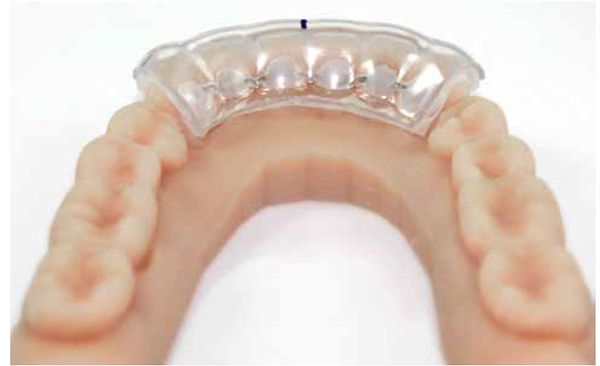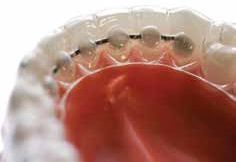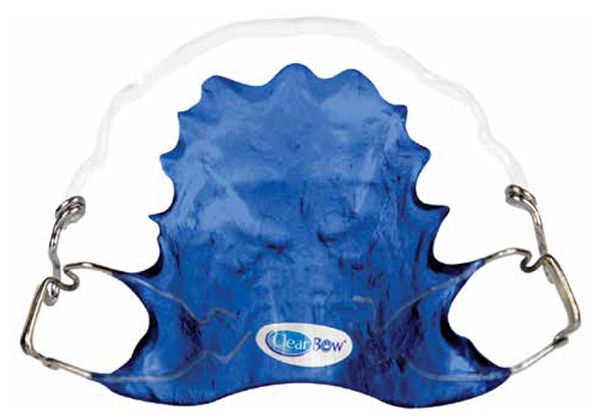James Bonham highlights recent advancements in posttreatment retention appliances
Orthodontic product development is growing from recent technology advancements like digital scanning, computer-aided design (CAD) software, milling machines, and 3D printing. These innovations generate exciting possibilities and ignite the creative minds of many orthodontists and orthodontic companies. Dental material development has also evolved in recent years. Today’s materials are stronger and more esthetic than ever before. The purpose of this article is to highlight recent advancements in posttreatment retention appliances, their delivery, and new approaches for long-term success.
Same-day delivery
The combination of intraoral scanning, CAD software, and 3D printing has changed many doctors’ retainer-delivery protocol. Patients are scanned at their final check appointment with braces still on the teeth. That scan is sent to a digital laboratory like Specialty Appliances where the brackets are digitally removed using sophisticated software. Skilled technicians can also digitally repair flaws in the model, block out undercuts, and even manipulate teeth prior to printing the 3D model. These models are now ready for fabrication of appliances such as positioners, aligners, and fixed or removable retainers. Orthodontists receive these appliances before the bracket-removal appointment. Finishing and retention appliances are delivered immediately before or after the brackets are removed, eliminating an additional appointment for both patients and orthodontic offices.



Fixed lingual retainers (FLR)
Laboratories report a steady increase in the use of bonded lingual retainers. Many patients simply demand a retention solution that is esthetic and requires little to no compliance. FLRs are available in a wide range of wire stiffness and shapes, including round, rectangular, and braided wire. They bond to selected teeth using either metal mesh pads or the more popular custom composite pads. In addition, the wire can also be scalloped below the papilla to help avoid plaque buildup for challenging hygiene patients.
Same-day delivery is the normal for bonded retainers, but it can take up valuable chair time when making them inside the office. Specialty Appliances’ laboratory can custom fabricate these wires and composite pads, then deliver the FLR in an indirect bonding (IDB) tray. Chairside assistants can seat the FLR in less than 2 minutes, just prior to bracket removal. No doctor time is required for this simple and consistent retention delivery method.
Esthetic Hawleys and wraps
New materials have greatly improved the esthetics of removable Hawley and wraparound retainers. The new ClearBow™ labial bow is an excellent replacement of metal labial bow wires. Patients are more likely to wear this invisible Hawley retainer, but there are other benefits besides esthetics. Using a heat gun, the material is formed to hug the tooth’s labial surface, providing excellent retention. ClearBow™ retainers also cover little to no biting surfaces, allowing the teeth to settle into occlusion.


ClearBow™ retainers provide superior durability compared to other clear labial bows. We rigorously tested the ClearBow™ in our lab for 8 months before confidently recommending it to our doctors. The transparent BPA-free material proved to be highly resistant to stains and unaffected by sunlight. We are most impressed with its virtually unbreakable material. The labial bow’s custom anatomical shape does not deform or break when exposed to higher than normal stress and temperatures. We confidently guarantee ClearBow™ Hawleys and wraparound retainers under Specialty Appliances’ Quality First Warranty.
Long-term retention plan
Posttreatment retention patients will inevitably lose or break their removable retainers. Teeth often shift when patients do not promptly visit their orthodontist. The best way to insure against relapse is to provide backup retainers, and today’s technology makes it affordable.
The new Guardian retention system delivers multiple invisible retainers along with the patient’s printed model. As long as there is no major dental change, a lifetime of retainers, without new impressions, can be formed from this printed model. Digital bracket removal is also included for all digital impressions submitted with braces. Other enhancements include minor anterior refinement and integrated pontic teeth. Guardian retainers are frequently designed to fit over fixed lingual retainers, both delivered at the brace removal appointment.

For more information about laboratory technology, retention, or other lab appliances, contact Specialty Appliances at 678-513- 4408, or visit specialtyappliances.com.
This article was provided by Specialty Appliances.
Stay Relevant With Orthodontic Practice US
Join our email list for CE courses and webinars, articles and mores



